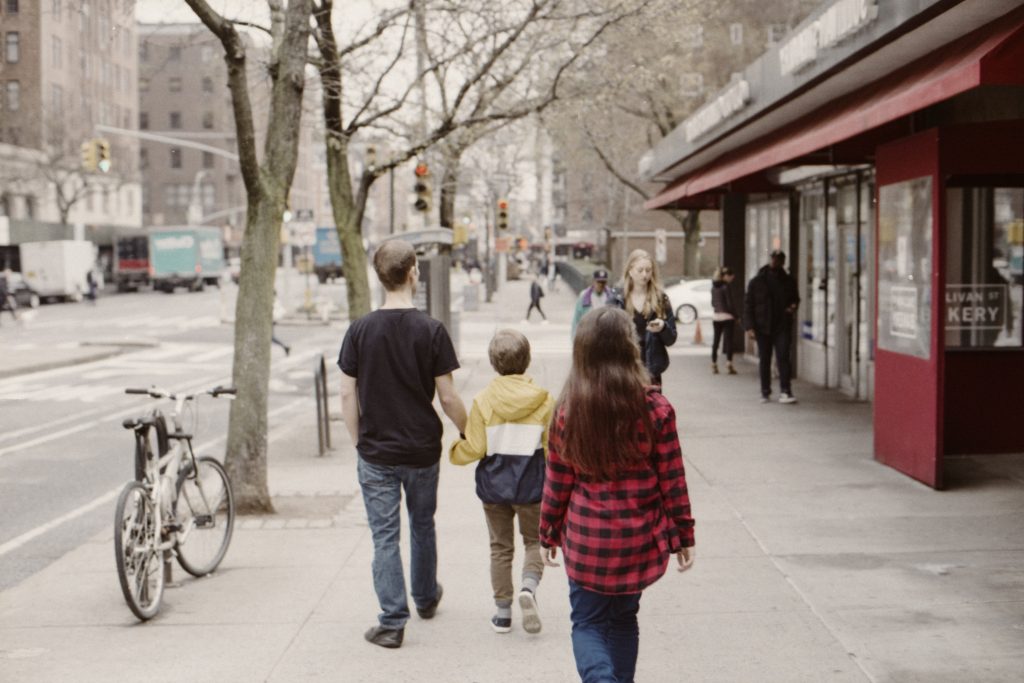We continuously learn from every single thing that is going on around us. While walking on the street, we learn from the different ways strangers walk. We learn from the way people we know talk to one another. Our observations and reflections of the world reinforce the perspectives we have in our minds. As we teach continuously, there are countless opportunities to reinforce values and skills we wish to imprint in children. Making observations and reflecting on our learning forms part of the process of developing empathy.
Empathy is gaining ground as a concept and as a skill that is generally accepted to be extremely important for children and adults alike to develop. The corollary to the premise that our actions continuously shape the learning experiences of others around us is that “if we create certain social contexts, we will create certain types of minds” (Gilbert 2014). This encourages us to approach the way we plan to instill empathy in our children in a more systemic, comprehensive way. Perspective-taking and compassion especially are two facets of empathy that can be greatly influenced by the social context that our schools build. We will briefly touch upon how this can happen in the classroom, and then focus on examples of how it can happen outside the classroom.
Cultivating empathy in the classroom happens in many different ways (Miller-Leiber, Tissiere, and Bialek 2017). It starts with the positive personal relationships between educators and students. Support systems, both academic and behavioral, are also critical domains of the classroom and can serve empathy-building. Restorative justice practices are a great example of such positive support systems. Finally, empathy can be practiced through specific units or activities. Each of these domains can be tapped into and integrated into a comprehensive approach to cultivate empathy in the classroom.

What about beyond the classroom? How can a social context that builds empathy be cultivated throughout the school? Asking the question is opening up our perspective to consider how empathy can be encouraged in all aspects of school. In this article, we will focus on how community is built and how the spaces in school are designed to cultivate empathy.
Building a school community that is visibly inclusive of all its members goes a long way to support the development of children’s compassion and offers authentic opportunities for perspective-taking. Aside from teachers, other workers may not be as visible in supporting the school community; for example, those who work in offices, building maintenance or in security. Children will tend to model the behavior that other adults, mostly the educators they know, have when they interact with these other members of the community.
Creating a poster with photos of each of them and a short description of their interests and displaying it in a space where both children and adults can see it can go a long way to model a school community inclusive of those often seen to be on the fringes. Students will also notice what types of interactions are encouraged with older students and students of other programs or tracks. If there are structured moments, such as whole-school carnivals, designed by the school for different age groups and program groups to get to know one another in a productive setting, this helps students internalize that the traditional barriers we erect around pre-defined groups are in fact artificial, and that they can choose to go beyond them and develop empathy for those on the other side.
The use and design of the space of the building and its surroundings also greatly influences the students’ mental models and how they perceive others. When green spaces that invite stillness and reflection are arranged in the schoolyard, or even in the building and in the classrooms, students will grow their ability to self-regulate and develop self-awareness, which in turn prepares them for practicing empathy. The use of “peace corners” and other similar settings is common today in Montessori schools and trauma-informed classrooms and with great results and should be a widespread practice in all schools. The thoughtful use of art in the school can also have a very positive effect on students’ perspective-taking and cognitive empathy. Pieces of art that represent a diversity of ways to be human and life stories can for example contribute to raise awareness about the reality of people that are out of our everyday reality’s grasp. Adding to these photographs, paintings and other works some questions that prompt reflection about what these people feel and think can be a great way to make the impact even stronger. When these works of art are chosen or are created by the students themselves, the effect on the community will be even more powerful.
We have looked at how a context favorable to the development of empathy can be set in our schools, out of the classroom. This exercise may have lead you to think about all other living environments and social contexts that can be designed to support empathy if we decided as a society that it was a priority. The way our houses are built, the way our cities are planned, the way we interact with mass media, the way our resource redistribution systems work and countless other components of our experience of life could be designed differently with the objective of helping people develop compassion for one another and live in harmony. As educators, we are in a privileged position to understand the importance of such changes. It is our responsibility to be heard and take action in the public space to make sure that the huge efforts we are making within our schools and other institutions are reinforced outside. We can lead the way to allow all our children are nurtured as the most authentic version of themselves.
Recommend0 recommendationsPublished in Ages 9-12, Social-Emotional Learning, Teens
